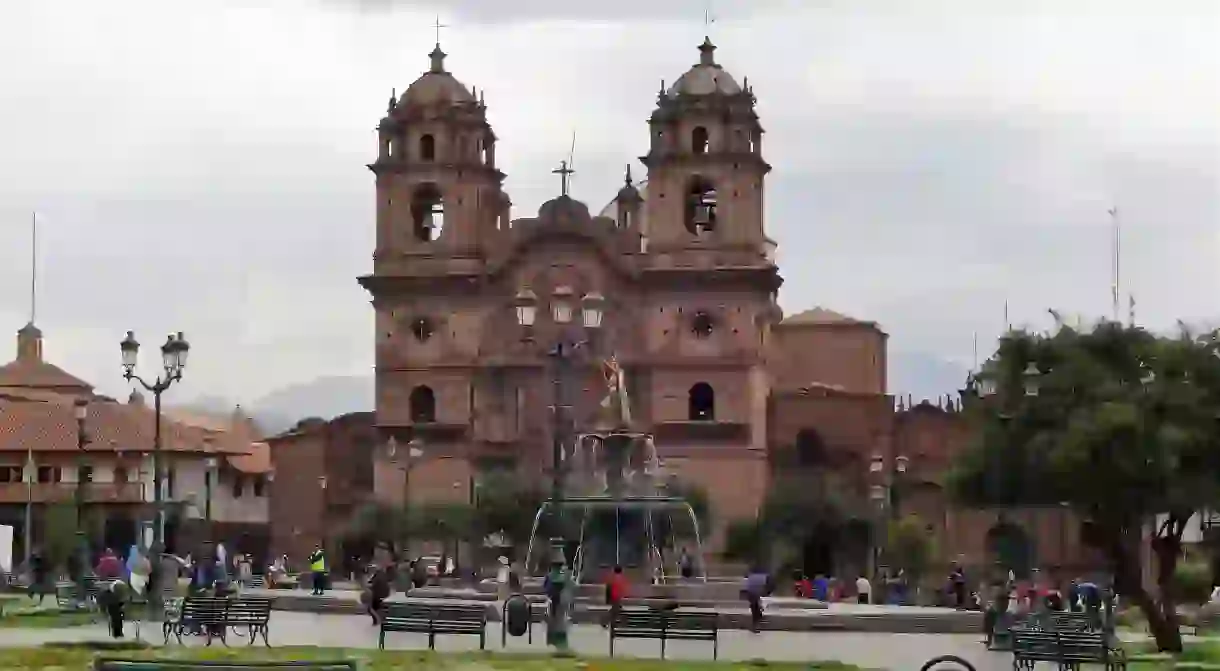The 23 Best Things To See and Do in Cusco, Peru

High up in the Peruvian Andes lies Cusco, once the center of the Incan Empire. It is, of course, the launching point for Machu Picchu – Peru’s largest tourist attraction – but the city is well worth a visit, to acclimate and experience the mix of Incan and Spanish influences that define it.
Plaza de Armas
Building

San Pedro Market
Market, Street Food, Healthy

Paddy’s Irish Pub
Pub, Irish, Pub Grub, Beer, Wine, Cocktails
Dare to try cuy
Restaurant, South American

Experience Cusco’s nightlife
Architectural Landmark
Cusco is the party capital of Peru, with one of the liveliest nightlife scenes in South America. Cheap hostels near the plaza encourage masses of backpackers to descend upon the many bars and clubs surrounding the square. Cusco’s most popular club, Mama Africa, blasts electronic, hip-hop and dance music until 5am or 6am. Ukukus, another favorite spot, includes live bands and local acts, in addition to DJs. After partying until dawn, enjoy pizza at Ukukus’ late-night pizza bar, or order food from Cusco’s many street vendors that stay open to cater to the post-club crowd. For a more comprehensive guide to the nightlife venues of Plaza de Armas, check out our guide.
Planetarium
Museum

Sacsayhuaman
Archaeological site

San Blas District
Historical Landmark, Architectural Landmark

The artisan neighborhood of San Blas is notable for its architecture and quaint shops. Just a short walk from the plaza, the terrain becomes steep on the way up to San Blas Plaza. The Inca road Hatunrumiyoc is a remnant of the city’s past and a remarkable cobblestone construction that leads through the neighborhood. Small boutique shops and galleries line the streets, making for more authentic gifts or souvenirs than the trinkets found in the Plaza de Armas. The San Blas Plaza contains the picturesque Iglesia San Blas, as well as homey shops and restaurants. Stop at the bakery/hostel Pantastico for a tasty snack.
Qorikancha (Sun Temple)
Church, Museum, Ruins, Shrine

Inca Museum
Museum, University

The 12-sided rock
Historical Landmark

Rocks on rock on rocks – that’s what you should expect to see when traveling through the Andean region of Peru. Cusco’s Inca stone work and architecture is incredible, and these 12-sided rocks are a perfect example of this brilliance. Recommended by Brandon Dupre.
La Catedral
Architectural Landmark

This cathedral towers over the Plaza de Armas and was constructed using Incan stones stolen from holy sites. Take a tour and enjoy the beautiful artwork and architecture. Recommended by Brandon Dupre.
Iglesia de La Compañia de Jesús
Architectural Landmark

Built in 1571 upon an Incan palace, the church can be found a short walk from the main plaza. It houses plenty of colonial artwork and a beautiful courtyard to enjoy. Recommended by Brandon Dupre.
Museo de Chocolate
Museum
Do you love chocolate? If so, you’ll love Cusco’s chocolate museum, which is really just a chocolate store and not a museum at all. You’ll find different flavors of chocolate that you’ve never even heard of before, like coca and lucuma. Recommended by Brandon Dupre.
Museo Del Pisco
Museum
Q'enco Archaeological Complex
Historical Landmark
The word means “zig-zag” in Quechua because of the winding passageways that make their way through this temple—definitely a must-see on your trip. Recommended by Brandon Dupre.
Cristo Blanco
Architectural Landmark

This giant statute of Christ looks over the city and makes for a fun and somewhat easy day hike. Recommended by Brandon Dupre.
Drink Chicha
Architectural Landmark

Be on the lookout for a red, plastic flag sticking out of the door or window of a home and you’ve found one Cusco’s many spots where locals come to drink chicha, their fermented corn beer also known as the golden drink of the Incas. Recommended by Brandon Dupre.
Tambomachay
Historical Landmark

This ceremonial Inca bath is only a short drive or hike from Cusco and is included in your boleto turístico, the ticket to see all the ruins of Cusco and the Sacred Valley. Recommended by Brandon Dupre.
Museo de la Coca
Museum

Museo de Arte Popular
Art Gallery, Museum
Puka Pukara
Architectural Landmark
Another Incan structure located near Cusco, this ruin will almost look pink given the right amount of sunlight. Recommended by Brandon Dupre.
Shopping
Architectural Landmark

Trips and Tours in Peru
Natural Feature

Planning a visit to Cusco? This beautiful city is one of many highlights across one of South America’s most remarkable countries, so why not combine several of these wonders – some urban, some natural, some gastronomic – in one epic adventure when you book a spot on one of the many multi-day tours in our Peru collection. The hardest part is picking your favourite itinerary!













